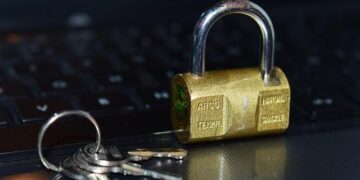The New Jersey Supreme Court has issued a pivotal ruling on the use of shaken baby syndrome (SBS) evidence in criminal trials, underscoring the distinction between legal judgment and scientific expertise. In a closely watched decision, the court emphasized its role as judges-not scientists-when evaluating the admissibility of expert testimony related to SBS. The ruling has significant implications for how courts assess medical evidence in cases involving alleged child abuse, potentially reshaping the standards for proving such charges in Central New Jersey and beyond.
NJ Supreme Court Clarifies Role of Judges in Evaluating Shaken Baby Syndrome Evidence
The New Jersey Supreme Court recently delivered a pivotal ruling that underscores the judiciary’s boundaries when handling complex medical evidence, particularly in cases involving Shaken Baby Syndrome (SBS). Emphasizing that judges are arbiters of law rather than experts in medical science, the Court clarified that while judges must assess the admissibility and relevance of SBS evidence, they should not attempt to weigh the scientific validity or interpret diagnostic findings themselves. This decision aims to safeguard the fairness of trials by ensuring that expert testimony remains the cornerstone of medical fact-finding in such sensitive and complicated cases.
In practical terms, the ruling instructs trial courts to focus on the following considerations when confronted with SBS evidence:
- Qualification of experts: Verify that medical witnesses possess appropriate credentials and experience related to SBS.
- Methodology scrutiny: Assess whether the scientific methods employed meet accepted standards within the medical community.
- Clear boundaries: Avoid judicial commentary that implies medical expertise or casts doubt on recognized scientific consensus.
| Judicial Role | Medical Role |
|---|---|
| Admits expert testimony | Interprets diagnostic results |
| Ensures procedural fairness | Determines cause of injury |
| Applies law impartially | Formulates clinical conclusions |
Implications for Forensic Science and Legal Standards in Child Abuse Cases
The NJ Supreme Court’s decision marks a pivotal turning point in how forensic evidence is evaluated in shaken baby syndrome (SBS) cases. By asserting, “We are judges, not scientists,” the justices emphasize the critical need for courts to scrutinize the scientific basis behind expert testimony rather than accepting it at face value. This ruling implicitly calls for higher standards of evidence reliability and challenges long-standing assumptions embedded in forensic science, urging legal professionals to seek multidisciplinary corroboration before reaching verdicts that can irrevocably impact families.
Key implications emerging from the ruling include:
- Stricter admissibility criteria: Courts must rigorously evaluate the methodology and consensus around scientific claims related to child abuse diagnoses.
- Enhanced expert vetting: Experts must demonstrate up-to-date credentials and adherence to accepted research standards.
- Holistic case assessments: Judicial focus on integrating medical, social, and behavioral evidence rather than relying solely on forensic findings.
- Encouraging scientific transparency: Open disclosure of potential limitations or controversies within SBS science to prevent miscarriages of justice.
| Aspect | Before Ruling | After Ruling |
|---|---|---|
| Evidence Evaluation | Presumption of scientific certainty | Critical judicial review encouraged |
| Expert Testimony | Relied on forensic conclusions | Demand for multidisciplinary support |
| Legal Impact | High conviction rates based on SBS diagnosis | Potential reevaluation of past convictions |
Recommendations for Improving Expert Testimony and Judicial Training in Complex Medical Matters
To enhance the accuracy and reliability of expert testimony in complex medical cases, courts must adopt a multidimensional approach. First, implementing continuous education programs tailored for judges and legal practitioners can bridge the gap between legal knowledge and evolving medical science. These programs should emphasize the understanding of scientific methodologies, common diagnostic challenges, and the limitations of expert opinions. Additionally, encouraging collaboration with multidisciplinary panels-including medical experts, forensic specialists, and statisticians-can offer judges a broader perspective on the evidence presented. Such panels can serve as advisory bodies, providing impartial assessments that help avoid overreliance on any single expert’s testimony.
Furthermore, establishing standardized protocols for vetting expert witnesses will significantly improve the quality of testimonies admitted in court. This includes stricter qualifications criteria, detailed disclosure of methodologies, and peer-reviewed evidence validation processes. Courts might consider adopting the following frameworks to ensure expert reliability:
- Pre-trial expert witness accreditation and cross-examination workshops
- Use of court-appointed neutral experts to offer balanced insights
- Integration of scientific advisory committees into ongoing judicial training
| Measure | Purpose |
|---|---|
| Expert Accreditation | Verify credentials before testimony |
| Judicial Workshops | Improve legal-scientific literacy |
| Neutral Expert Panels | Provide unbiased case evaluations |
To Wrap It Up
The New Jersey Supreme Court’s recent ruling on shaken baby syndrome underscores the complex intersection of law and science in the courtroom. By emphasizing their role as judges rather than scientific experts, the justices reaffirmed the importance of careful legal scrutiny when evaluating scientific evidence. This decision not only shapes how shaken baby syndrome cases are handled in New Jersey but also highlights broader challenges faced by the judiciary in addressing evolving medical and forensic knowledge. As the debate continues, the court’s stance serves as a reminder of the careful balance required to ensure justice is served based on sound legal principles.






























